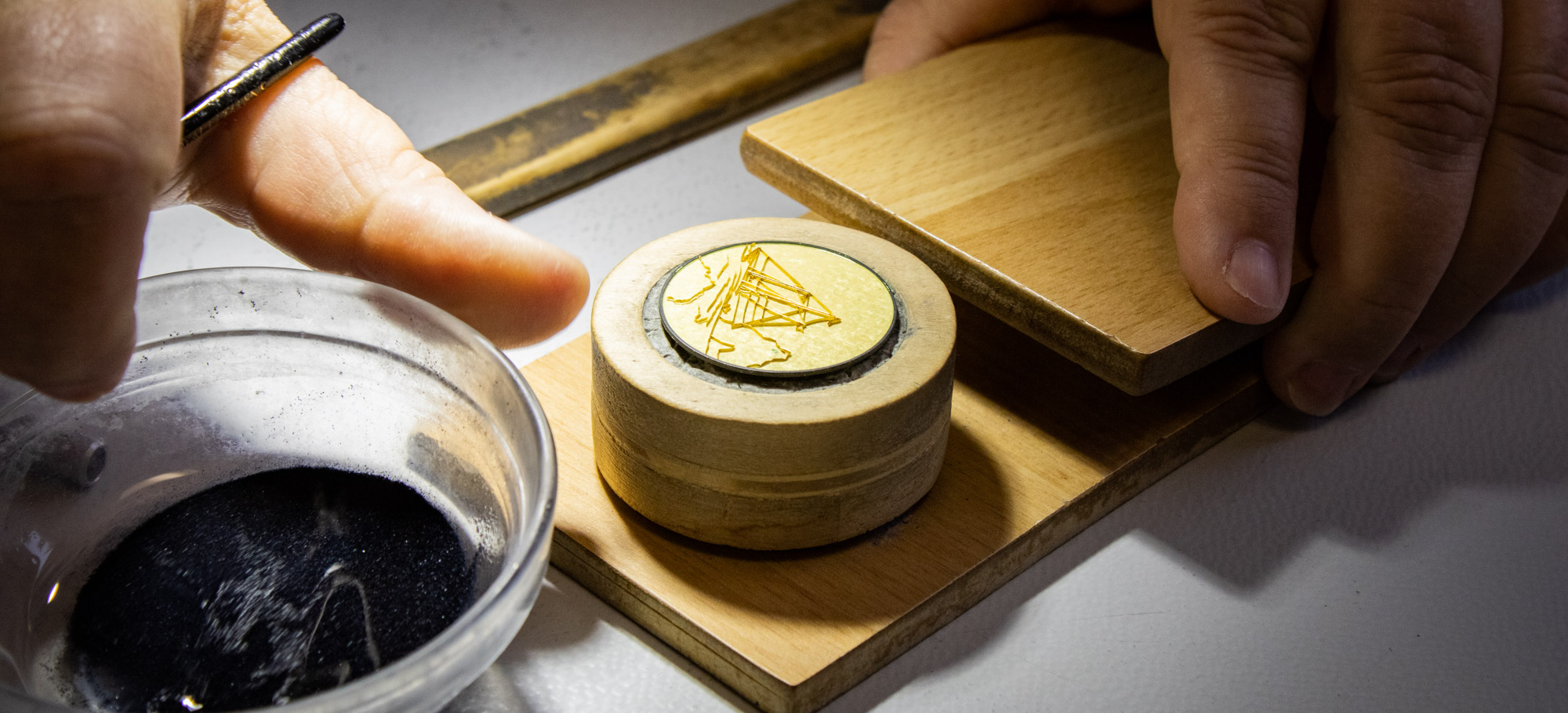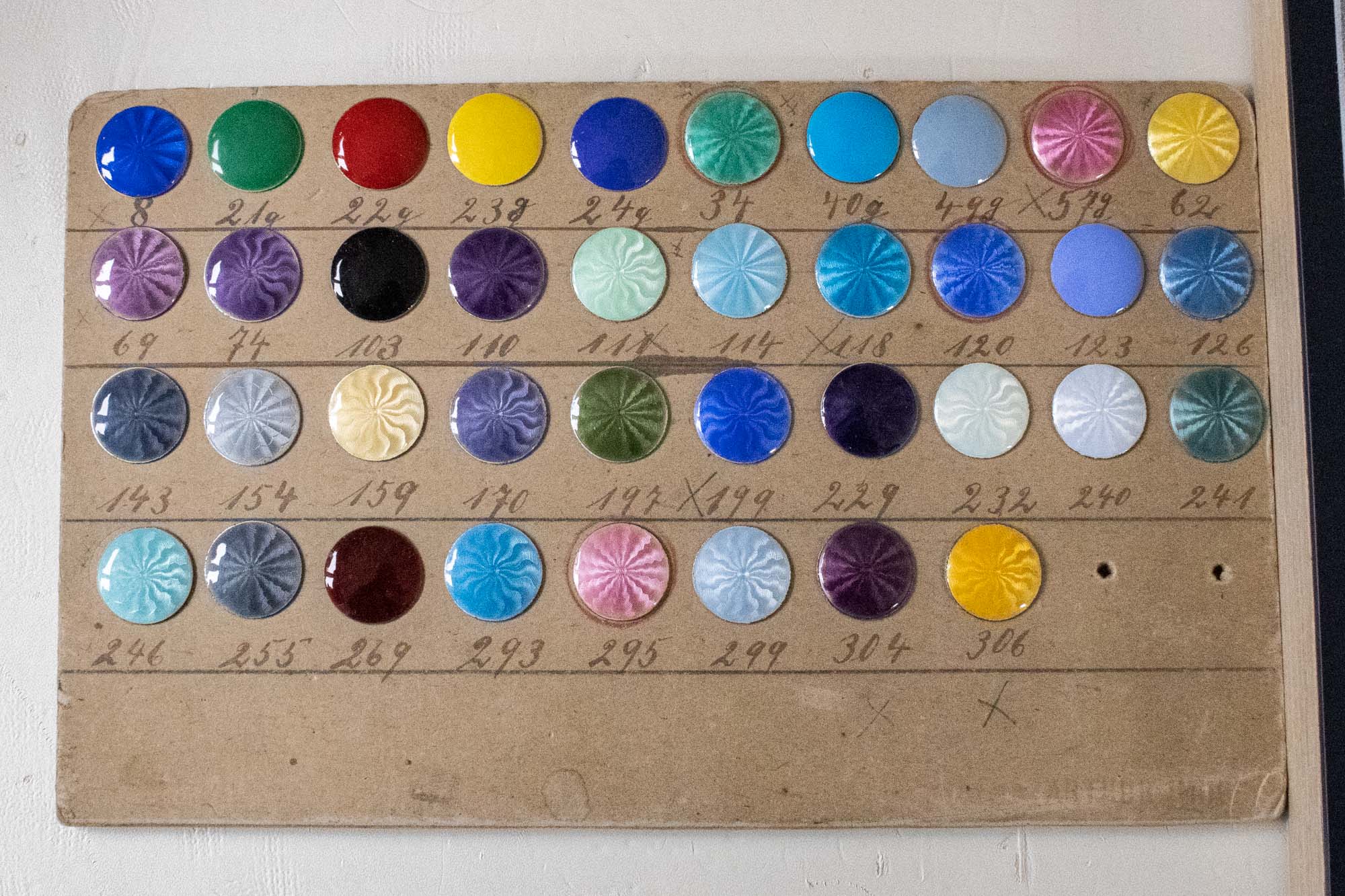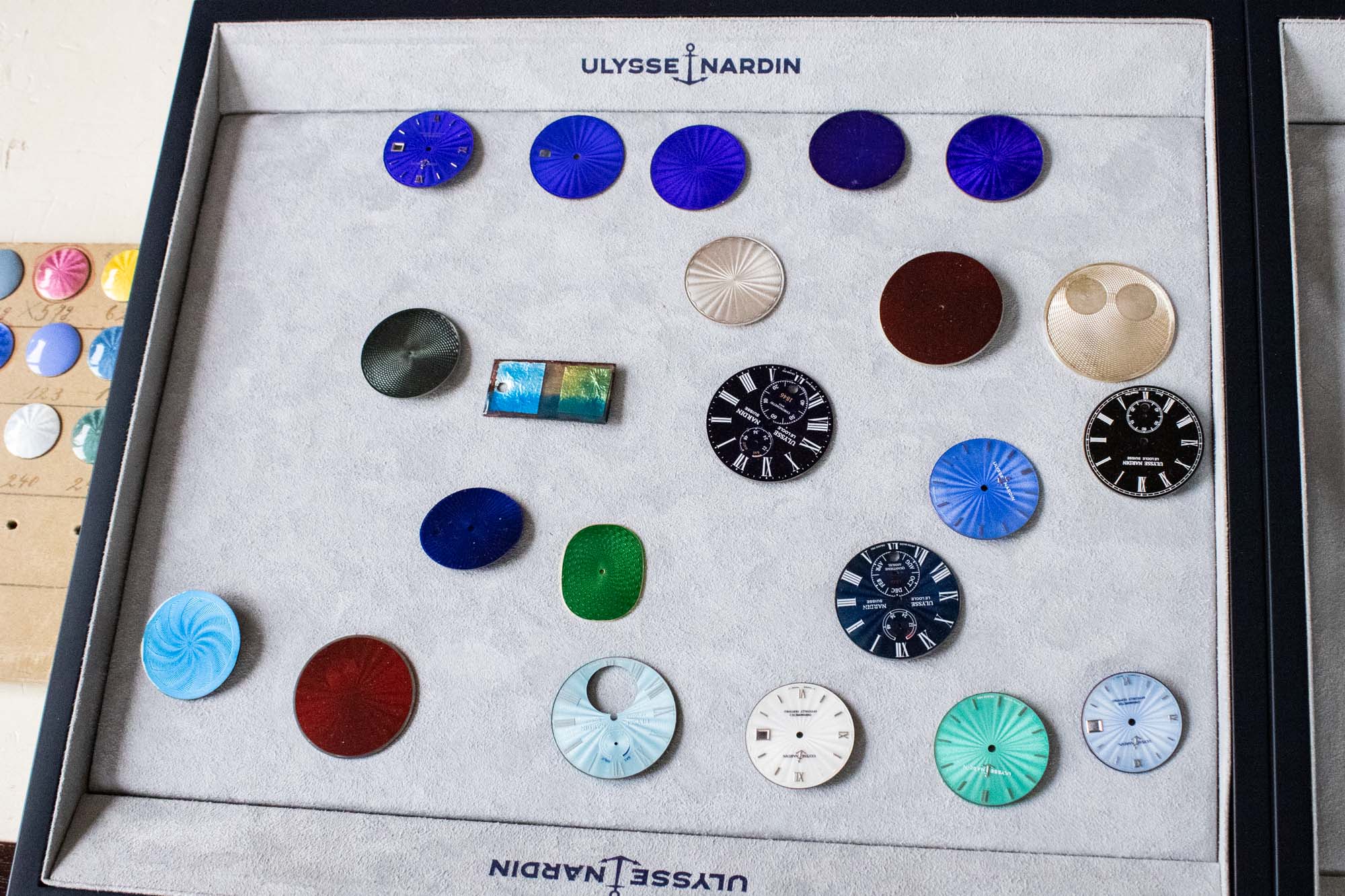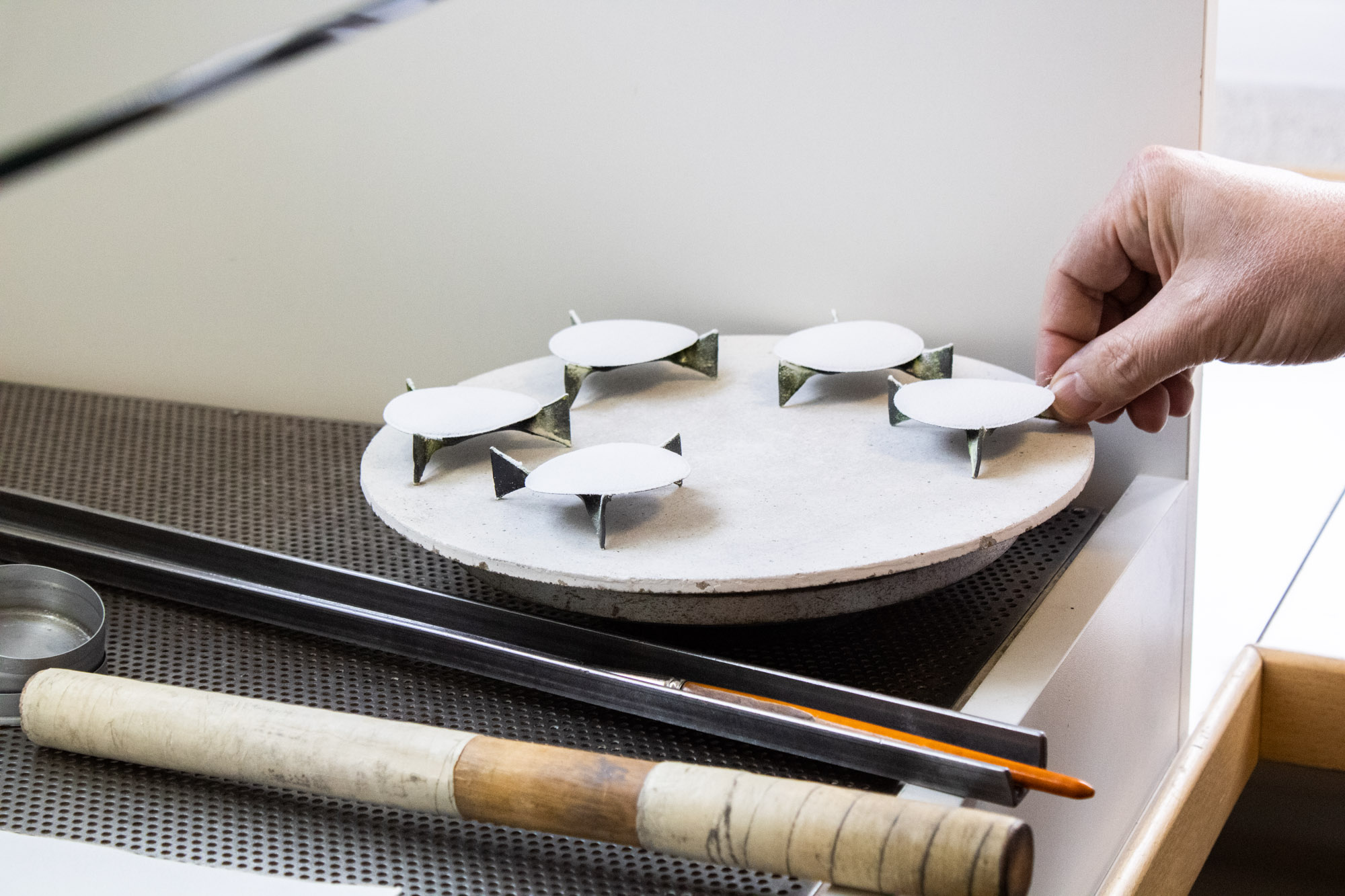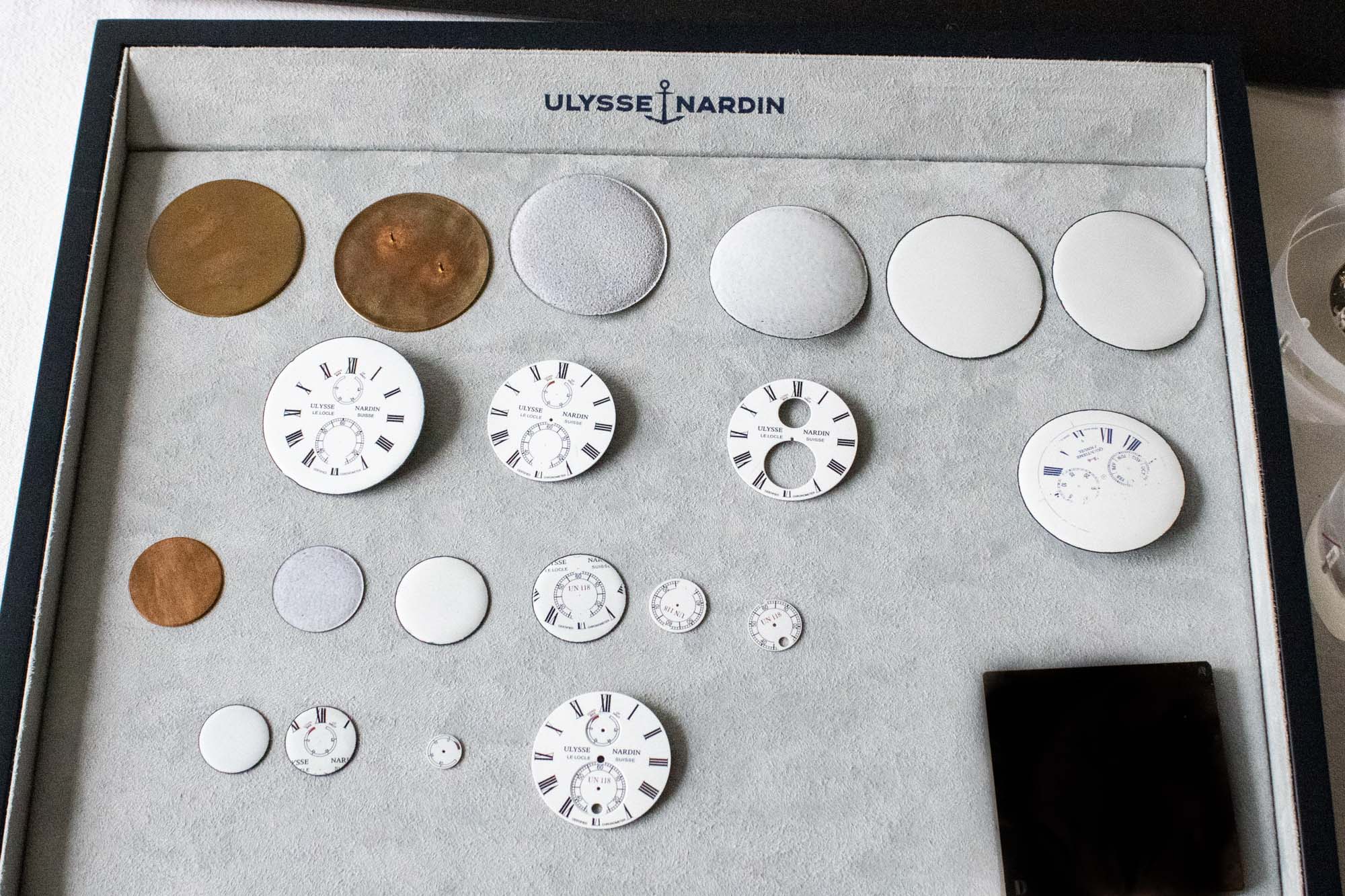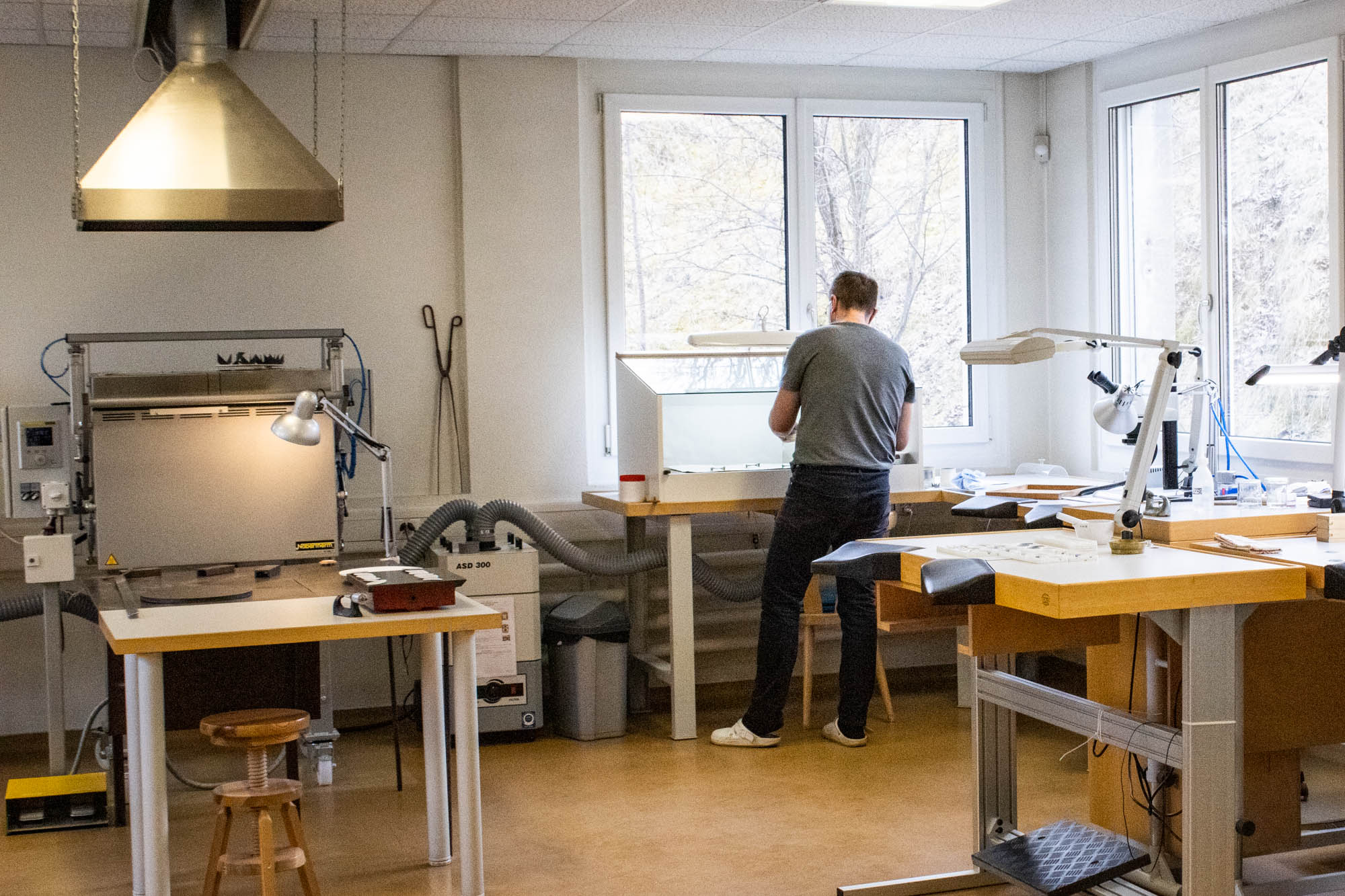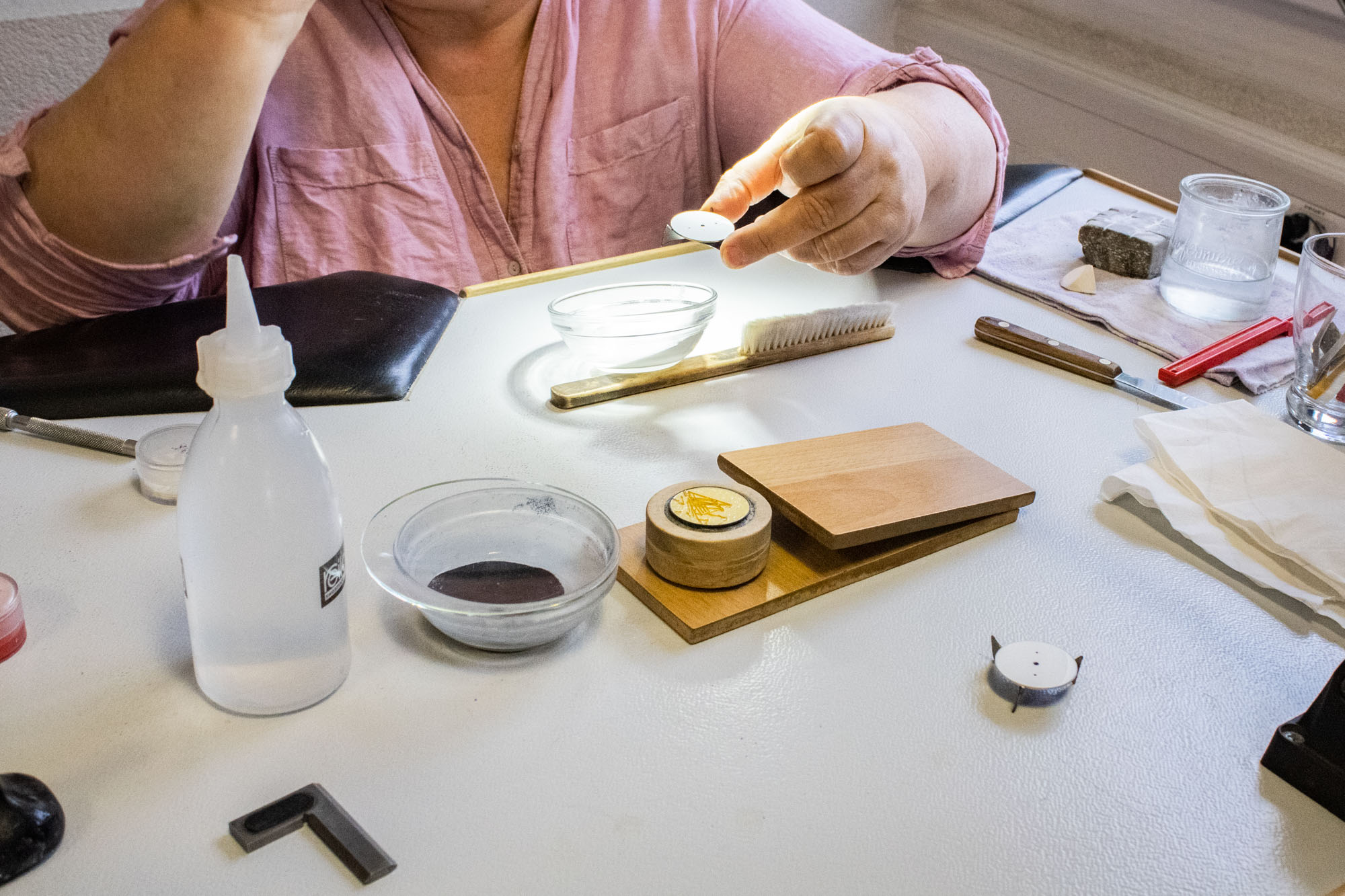 There can often be quite a lot of smoke and mirrors when it comes to the manufacturing capabilities of luxury watch brands; however, Ulysse Nardin is very much a true in-house manufacturer, and the company is entirely capable of producing the vast majority of the components that are used to make its watches. Best-known for designing the Freak and pioneering the silicon hairspring, Ulysse Nardin is most frequently associated with the modern and technical side of watchmaking, although this represents just one side of the brand’s overall capabilities. In addition to having its own manufacturing facilities that produce its various case and movement components, Ulysse Nardin also owns and operates its own enamel dial workshop known as Donzé Cadrans, which is considered to be one of the world’s premier sources for enamel watch dials.
There can often be quite a lot of smoke and mirrors when it comes to the manufacturing capabilities of luxury watch brands; however, Ulysse Nardin is very much a true in-house manufacturer, and the company is entirely capable of producing the vast majority of the components that are used to make its watches. Best-known for designing the Freak and pioneering the silicon hairspring, Ulysse Nardin is most frequently associated with the modern and technical side of watchmaking, although this represents just one side of the brand’s overall capabilities. In addition to having its own manufacturing facilities that produce its various case and movement components, Ulysse Nardin also owns and operates its own enamel dial workshop known as Donzé Cadrans, which is considered to be one of the world’s premier sources for enamel watch dials.

Donzé Cadrans S.A. was originally founded in 1972 by master enamel craftsman Francis Donzé, who established his workshop in the hills of Le Locle, Switzerland. Although Ulysse Nardin acquired the historic enamel dial manufacturer in 2011, Donzé Cadrans is still allowed to produce dials for other watch brands, and its works can be found inside timepieces from some of the industry’s most prestigious names. While certain styles of watch dials can be produced largely by machines and require virtually zero human interaction, vitreous enamel is a traditional art and over 90% of the process must be performed by hand using a method that has barely changed since the 17th century. Consequently, not many brands have the ability to produce their own enamel watch dials, and if you look at the various dials in different stages of production that are being created at Donzé Cadrans’ facilities, you will see a number of examples that you might recognize from other brand’s watches — some of which are public knowledge, and others that are not.
 Rather than being a factory filled with rooms of high-tech milling machines that are each the size of a grand piano, Donzé Cadrans is very much a workshop, and its facilities largely consist of individual work benches and small dedicated workstations, with the most advanced equipment being microscopes and the high-temperature ovens that are used to fire the enamel dials. While everything at Donzé Cadrans is very clean and well-appointed, nothing is at all industrialized, and nearly every single person working there is actively doing something with their hands, rather than sitting at a computer or operating a large digitally-controlled machine. Additionally, as the building itself is slightly recessed into the Le Locle hillside, the view from the windows at Donzé Cadrans largely showcase trees and the natural surroundings, which further adds to the calm and relaxed nature of its facilities.
Rather than being a factory filled with rooms of high-tech milling machines that are each the size of a grand piano, Donzé Cadrans is very much a workshop, and its facilities largely consist of individual work benches and small dedicated workstations, with the most advanced equipment being microscopes and the high-temperature ovens that are used to fire the enamel dials. While everything at Donzé Cadrans is very clean and well-appointed, nothing is at all industrialized, and nearly every single person working there is actively doing something with their hands, rather than sitting at a computer or operating a large digitally-controlled machine. Additionally, as the building itself is slightly recessed into the Le Locle hillside, the view from the windows at Donzé Cadrans largely showcase trees and the natural surroundings, which further adds to the calm and relaxed nature of its facilities.

Enamel watch dials can be produced using a variety of different techniques, although all of the dials produced by Donzé Cadrans rely on a similar underlying process of applying mineral compounds to a metal surface and heating the structure at temperatures upwards of 500°C until the mineral particles melt into a glass material that fuses to the surface of the metal. Unlike watch dials that use paints and lacquers to achieve their color and surface finishing, vitreous enamel dials will not fade or oxidize over time, and you will frequently see vintage timepieces with thoroughly worn and well-loved cases that have enamel dials, which are still as crisp and white as the day they were first manufactured. With that in mind, while enamel dials offer superior longevity and a striking glossy appearance, producing them is significantly more difficult than simply painting a surface, and the process of creating enamel dials is accompanied by an incredibly high failure rate.
 While the actual process of creating an enamel watch dial initially seems fairly straightforward, enamel is a notoriously temperamental medium. Even when the application process is executed perfectly, small variations in temperature, humidity, or the duration of time that the enamel is exposed to heat can result in cracks, bubbles, irregularities in color, or even the metal base layer itself warping and becoming unusable. Additionally, once you start incorporating multiple different colors of enamel and more involved techniques such as guilloché, flinqué, champlevé, and cloisonné, the actual process of creating an enamel watch dial becomes far more of a rarified art than any type of manufacturing science, and it takes years of experience to master each of the different skills that are required to create an enamel dial, with nearly all of them performed solely by the human hand.
While the actual process of creating an enamel watch dial initially seems fairly straightforward, enamel is a notoriously temperamental medium. Even when the application process is executed perfectly, small variations in temperature, humidity, or the duration of time that the enamel is exposed to heat can result in cracks, bubbles, irregularities in color, or even the metal base layer itself warping and becoming unusable. Additionally, once you start incorporating multiple different colors of enamel and more involved techniques such as guilloché, flinqué, champlevé, and cloisonné, the actual process of creating an enamel watch dial becomes far more of a rarified art than any type of manufacturing science, and it takes years of experience to master each of the different skills that are required to create an enamel dial, with nearly all of them performed solely by the human hand.

Grand feu enamel dials are the simplest style produced at Donzé Cadrans, and they are created by applying a powdered glass material to the metal base plate of the dial and heating it until the powder melts and forms a glossy uniform surface. The “grand feu” name translates to “great fire” in French, and in order to achieve a saturated color and a uniform surface without creating any cracks or bubbles, the enamel surface must be built up in layers, with a miscalculation at any stage resulting in complete failure and the need to restart the entire process. Although white is easily one of the most common colors (which has traditionally been produced using arsenic and lead, although more environmentally friendly alternatives are actively being researched), other colors can be achieved by adding different minerals to the powdered compounds, and Donzé Cadrans produces enamel dials in a full spectrum of hues that includes traditional options such as white and black, along with others in vivid and translucent shades.
 While classic grand feu enamel dials are characterized by their smooth and glassy surfaces, the art of enameling can also be used in conjunction with traditional engraving or guilloché techniques to further highlight the elaborate decorations that adorn the metallic base layer of the dial. With guilloché dials, the engravings are individually created with a rose engine lathe, while a flinqué dial has its pattern stamped into its surface with a tool that recreates a hand-engraved pattern. On both styles of dials, a colored translucent enamel is applied to the surface, and the varying hues of the material add to the perceived depth of the three-dimensional pattern to help showcase the intricate engravings that reside below the glossy surface of the dial.
While classic grand feu enamel dials are characterized by their smooth and glassy surfaces, the art of enameling can also be used in conjunction with traditional engraving or guilloché techniques to further highlight the elaborate decorations that adorn the metallic base layer of the dial. With guilloché dials, the engravings are individually created with a rose engine lathe, while a flinqué dial has its pattern stamped into its surface with a tool that recreates a hand-engraved pattern. On both styles of dials, a colored translucent enamel is applied to the surface, and the varying hues of the material add to the perceived depth of the three-dimensional pattern to help showcase the intricate engravings that reside below the glossy surface of the dial.

Further moving up the complexity spectrum of enamel watch dials are champlevé enamel dials, which incorporate multiple different colors of enamel with engravings to create a highly detailed image. The production of these dials is an inherently more involved process than creating a traditional single-color grand feu enamel dial, as they require the collaboration of both an engraver and an enameler. First, the engraver carves three-dimensional pockets and elaborate designs into a solid gold base layer, and then the enameler carefully fills the pockets and sections with different colors of enamel. Once all of the enamel has been applied and polished, the engraver then goes back over the metal walls that form the borders of the enamel-filled compartments on the dial to create a three-dimensional “trompe l’oeil” effect that adds to the realism of the image.
 The final variety of enamel dials created at Donzé Cadrans are cloisonné enamel dials, and these are often some of the most elaborate designs that the workshop produces. Cloisonné is one of the oldest styles of enameling and similar to the champlevé method, pockets and compartments are filled with different colors of enamel in order to create a detailed image against an engraved solid gold base layer. However, while these sections are carved directly into the surface of a champlevé dial, a cloisonné enamel dial has the walls for its sections created out of gold wire (somewhat similar to how lead framing outlines each piece of a stained glass window), and these tiny segments of wire are carefully bent and fitted together to create the outline of the picture, which is then meticulously filled with different colors of enamel, before being fired and polished to a mirror-smooth surface.
The final variety of enamel dials created at Donzé Cadrans are cloisonné enamel dials, and these are often some of the most elaborate designs that the workshop produces. Cloisonné is one of the oldest styles of enameling and similar to the champlevé method, pockets and compartments are filled with different colors of enamel in order to create a detailed image against an engraved solid gold base layer. However, while these sections are carved directly into the surface of a champlevé dial, a cloisonné enamel dial has the walls for its sections created out of gold wire (somewhat similar to how lead framing outlines each piece of a stained glass window), and these tiny segments of wire are carefully bent and fitted together to create the outline of the picture, which is then meticulously filled with different colors of enamel, before being fired and polished to a mirror-smooth surface.

When creating an enamel dial, there are a number of different points throughout the production process where something can go wrong and completely undo dozens of hours worth of work. When making a cloisonné dial, it’s imperative that an even layer of enamel be applied to either side of each wire border, otherwise the wire will be subject to tension and bend during the cooling process. Similarly, the color of the enamel does not always stay the same after it is removed from heat, and depending on the specific hue of the enamel, the dial often needs to be taken out of the oven long before it will actually develop its intended appearance. Furthermore, even once all of the enamel work has been completed, the dials will then need to be drilled in order to create the holes for the hands, sub-dials, and the connecting feet of the hour markers. Additionally, this drilling process must be done by hand because the various layers of the dial all have different degrees of hardness, and any misstep during this stage has the potential to entirely erase the 50 to 60 hours worth of work (or more) that have already gone into the production of each individual dial.
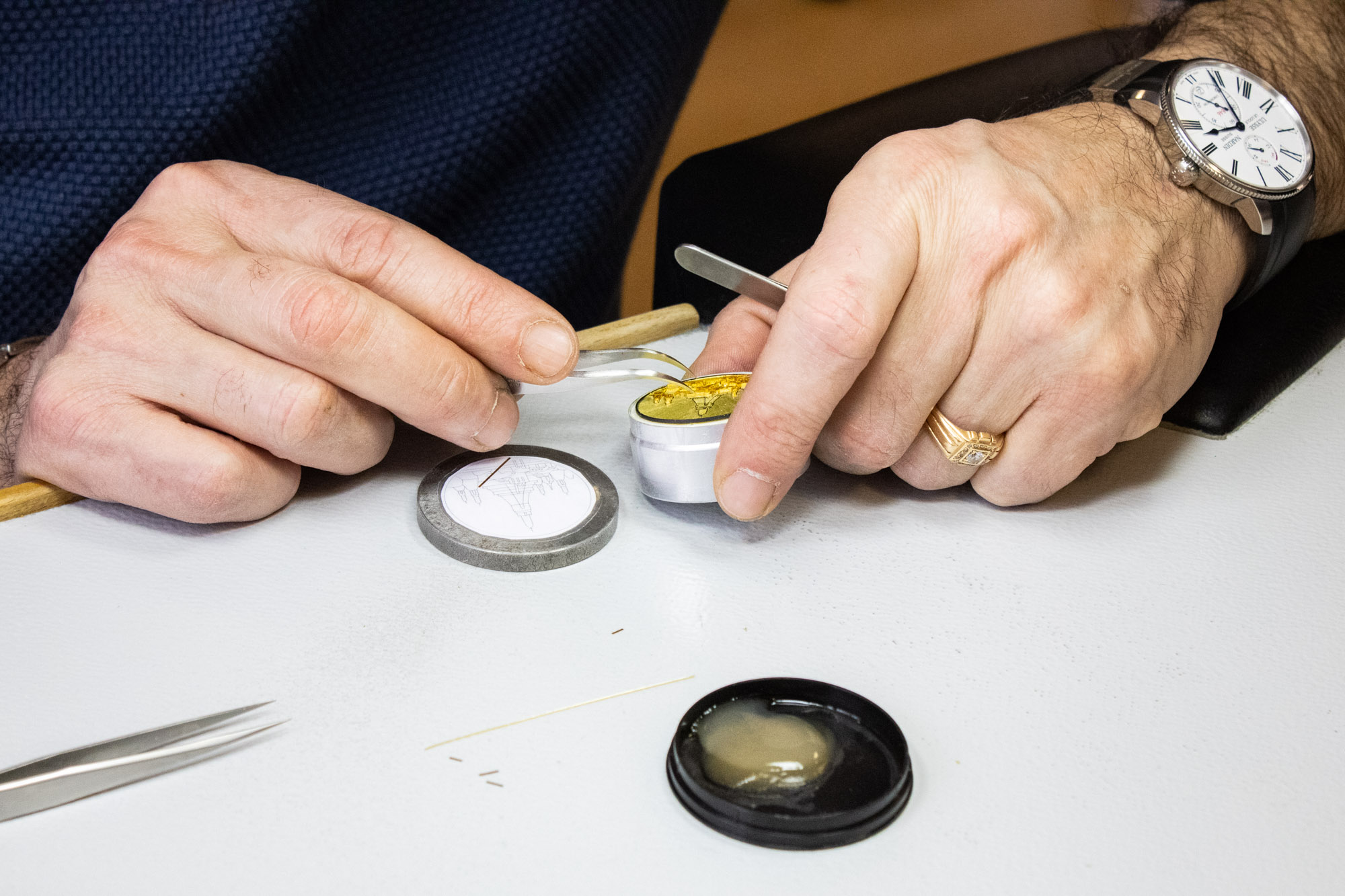
What I personally found most impressive about the work being performed at Donzé Cadrans is how much of the process is actually performed by human hands. Terms such as “hand-made” and “made by hand” can often be used as buzzwords by brands to bolster the perceived value of their products; however, this can often mean little more than it was a human hand that pressed the buttons of an otherwise autonomous, computer-controlled machine. With that in mind, human hands are responsible for nearly everything that happens at Donzé Cadrans, and even the tools they use are largely without electronic assistance. Aside from some basic necessities such as lights, microscopes, ovens, and cutting tools, everything else is remarkably simple and almost primitive. All of the engravings and cloisonné wire work is done by hand with humble tools such as chisels and tweezers, while all of the enamel is expertly applied by one of the master enamelers, who uses nothing more than a small brush and a set of magnification glasses.

Part of why I love watches is because they represent the intersection of numerous different interests, such as art, mechanics, history, material science, and even economics. Depending on the brand and even the specific model, watches can incorporate different elements of these related worlds, and while some timepieces like the Ulysse Nardin Freak lean heavily into the engineering and materials side of things, others such as the brand’s enamel dial creations are the definition of wearable pieces of art. The vitreous enamel dials produced by Donzé Cadrans carry on the knowledge and skills of what is increasingly becoming a lost form of art, and by placing these beautiful hand-made works inside the cases of its watches, Ulysse Nardin is able to preserve centuries-old traditions and shrink them down into micro-sized creations that you can wear on your wrist. For more information on Ulysse Nardin, please visit the brand’s website.

